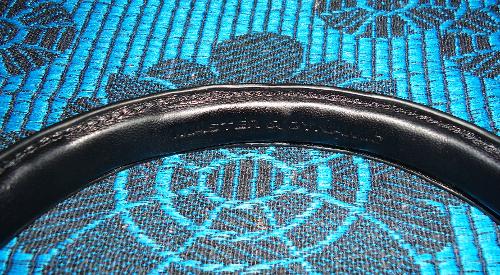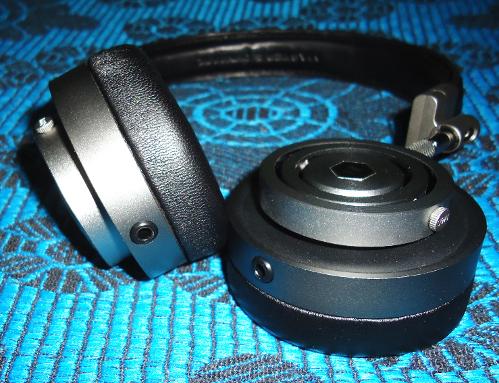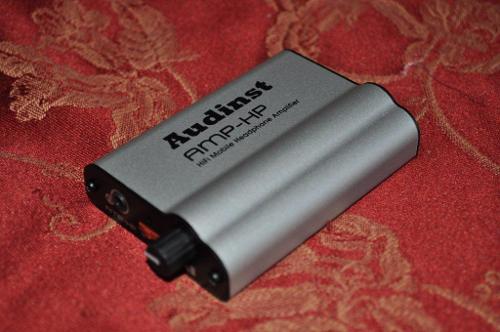Me: I am a 21 year old student living in a small town in India. I would like to call myself a music enthusiast, rather than an audiophile. I was inspired by music since childhood, and as the time passed, the passion of music grew in me, and that subsequently led me to join Head-Fi. Eventually, I found the pleasure of listening to music mainly by the HD600 and recently, by the seductive LCD2 headphones, and realized the true components of recorded music. I usually like to listen to Indian Classical Music along with Bollywood songs. My main listening genres include classical, vocal, instrumental, jazz and sometimes pop.
Intro: Little Dot is a famous Chinese brand specializing in the area of Tube Headphone Amplifiers. They are rolled out their first product around 2008. The 1+ hybrid is the entry level amp offering from Little Dot.

Those days, OTL/tube amps would be expensive, and out of reach of a humble Enthusiast. Little dot products made well performing OTL amps in an affordable price. This made them a well known name across the Audiophile World. Little Dot have a specific vision in making their products: The products should have appreciable sonic performance, quality and should have a practical operating aspect. All their products are handmade by good workmanship. Mr. David & Mr.Yang are the key people behind Little Dot.
Specifications of LD1+:
THD+N:
0.2%: 1Vrms @ 1000Hz
0.6%: 3Vrms @ 1000Hz
1.0%: 5Vrms @ 1000Hz
Signal-to-Noise: 92dB
Headphone Impedance: 8 - 600 ohms
Input Impedance: 50K ohms
Power Output:
150mW @ 300 ohms
300mW @ 120 ohms
800mW @ 32 ohms
User variable gain settings: 6.5x or 3.25x
Power Consumption: 15VA
Let us see what the LD1+ has got for us,
Packaging and Accessories: The LD1+ arrives packed inside a general cardboard box, packed inside a removable foam packing. Tubes are included inside the foam socket. Default tube included is a generic 6J1. Packaging is generic, but nothing to complain about. But all the included accessories have a good quality and feel to them.
List of accessories in the box, which include the following:
RCA Cable: One short 1.8M RCA to RCA cable for input connection.
¼” Converter: To plug in the 3.5mm headphone jacks in the 6.5mm sockets.
Power Cord: A mains AC power cord EU/US/AU/UK is supplied as per specifications.
User Manual: Contains instructions to operate the 1+ and other warranty information.
Design and Build: The LD1+ has a very good overall build quality. Its design is very practical.

The entire case is made up of high quality brushed aluminium, and is painted in gloss black, which is a finger print magnet. The LD1+ fairly large in size, and just appears to be smaller in pictures. It feels heavy when held owing to its 1.5 Kg weight (thanks to strong & reliable transformer). At the front we have a volume knob, ¼” headphone output socket, and a blue indicator LED. At the rear side of LD1+, we can observe the presence of power socket, power switch, and RCA inputs.

Volume knob rotation is smooth and knob has just the right size for fingers. ¼” jack is also a very smooth operator, which is neither too tight nor too loose. The ¼” socket employs ball bearings instead of clips to avoid scratches/damage on the headphone jack. Power switch has a pretty great operation and strength, and is very precise in its job. RCA jacks are gold plated, and the plating wears off along with the time. Since Little dot amps are hand soldered and assembled, I feel soldering and assembling could have been done in a more precise or in a neat way. The volume pot along with most of the components is of generic make, which is quite disappointing, but this is to be expected as LD1+ has a very competitive pricing.

The 7 pin Tube sockets are ceramic type, have a great build. LD1+ accepts single pentode or triode type vacuum tubes. Matched pair is technically not essential for operating the LD1+, however matched pair does add up to proper channel balance and slightly better performance. LD1+ is a very versatile and customizable hybrid amp, users can roll different op-amps and three families of vacuum tubes as per their tastes.

The only downside I observe here is, bottom chassis has to be removed every time to change gain/tube settings. This is not really a drawback, but it would be more easy and convenient for users (especially for tube/op-amp rollers) to do this way.

Sound: The LD1+ has a slightly rich, euphonic yet airy sonic character. ‘Musical presentation’ is the key word. I find it very appealing and pleasing. Presentation is in such a way that, mids are little more intimate, with lows & highs sound tad more relaxed and laid back. Stock tube and op-amp is pretty mediocre and needs to be changed/upgraded. I also recommend changing the stock volume pot to Alps-16 100K for further improvement in SQ.
Burn in: These improve a lot with time. Let’s say a playback of 50 hours provides few audible improvements, Bass prior to break-in is quite muddy, and eventually it becomes more accurate and clean, Mids will sound more open, airy and natural. highs become slightly more smooth, soundstage will open up by a margin.
Op-amp rolling: Any dual precision audio op-amp will work on LD1+, but there are few renown and high performance audio op-amps, & after trying on many, like, 2134NA, 4562NA, 6171,6172, 2111KP, 49720HA/NA, 49860NA, 49990MA, OPA209/627 /827 I have settled on 2X LME49710HA (metal cans) on browndogs. This results in a very detailed, natural, airy presentation with precise and lifelike soundstage.

With stock op-amp, LD1+ runs fairly cool. With replacement op-amp, amp runs warmer by about 20%, But with op-amps mounted on browndog, Surface temperature rises by 40% (probably due to power intake by op-amps)
Tube rolling: One can roll 6J1/6AK5/5654/WE403A, WE408A, EF91/92/95 family tubes on LD1+. Essential thing to do is set jumpers before tube rolling. Failing to do so can burn up tubes or damage the amp itself. Out of all these, The Mullard EF91, Yugoslavia 6HM5, and Voshkod 6ZHP1 tubes particularly match pretty great on LD1+ and result is a very clear, clean and airy sound with a lifelike 3D soundstage. And the good news is that all these tubes are available at 20$ a pair shipped on ebay!
I can conclude op amps have overall 30% effect on final sonic character of LD1+, whereas tubes have around 70%. So tube rolling can bring major audible changes than op-amp rolling.
The LD1+ has a solid power supply which delivers. No distortions, works great even when directly plugged into mains (no need for power purifier etc like some tube amps) No distortion/ out-of-breathness found on any combination of op-amps or tubes. There are gain jumper present (J3, J4), which if removed provides an high gain of 7X (ideal for 300-600 ohm cans). Else jumpers engaged will provide a low gain of 3.5X (ideal for Planars and low impedance dynamic cans) I also can confidently say that EF91 + LME49710HA is the best possible combination on LD1+ for all planar magnetic headphones.This amp is pretty powerful and can drive demanding cans like LCD2’s in low gain and less than 50% of the volume pot.
Lows: are accurate, tight and refined; have a good impact. Depth is pretty good.
Mids: sound very natural, and appealing, and have a prominent warmth and lush (I guess that is in a good way, comes very pleasing to our ears). Tonality particularly, one of the best at this price point. This character makes LD1+ a strong contender for vocals.
Highs: Very smooth treble without grains and sparks. Highs convey an image of smoothened darkness, just like a caramel chocolate. Highs are airy with good amount of space sensation.
Soundstage: Soundstage is airy, natural and circular. Depth is excellent. Instrument separation & detailing is pretty good. With the default Chinese 6J1, tonality is a bit harsh, and soundstage is limited. But once you pop in the upgrade EF91, soundstage very 3D, airy and clear. At this point, the 1+ shows a hint of its potential.
LD1+ portrays music in such a way that, one feels as if the music is all around him. The sonic character here is so natural and eased that the tonality sounds very life-like. According to my observation, these cans sounded good in all genres I tried, and hence I conclude LD1+ are not very transparent, and are forgiving to poor recordings. Hence these are not resolving, but very musical in character.
Comparison: The main competitors of LD1+ are the Bravo Ocean & Schiit Vali along with Project Starlight which are all similarly priced. All these are hybrid amps.
Bravo Ocean: Hybrid amp which uses mosfets for amplification. Mosfets have their own kind of sonic touch to them, which I quite don’t like. Power supply is external DC type and not well made (which results in higher noise floor, light electrocution) But as a advantage, Tube rolling is very economical and convenient here, since Ocean supports a single 12AU7, which are very common to obtain & no hassle for a matched pair.
Summary: Just like a Bravo V2 on steroids, small & powerful. Most economical of all, easy tube rolling. But noise floor, power supply are a question mark.
Project Starlight: At 225$ built & shipped this is the most expensive amp of the bunch. But Starlight has best internal build quality (along with Vali). The Starlight is not fully enclosed in a case. Its output power at headphone is quite limited, and is lowest of all these amps. Starlight also has a op-amps and support for 6/12V Dual Triode tubes. Starlight is specifically suited for lower impedance & less demanding headphones.
Summary: Best option for DIY’ers & Tube/Op-amp rollers. But expensive, driving power is not the best.
Schiit Vali: Has no rolling options. Everything is fixed in. Output impedance is quite high at around 6.5 ohms and is not suitable for IEM’s. Power supply is again external, but definitely better than Bravo Ocean. Vali uses 16V AC/AC adapter (similar to O2 amp adapter) Vali also has a best build quality.
Summary: Good choice for beginners who don’t want to roll anything. A nice amp for 50-300 ohm headphones.
Ultimately the LD1+ has an edge over all tube amplifiers to be tried in 200$. LD1+ cleany sweeps out Vali, Ocean & edges out the Starlight. We can observe here, the competing amps lack one or the other feature with them, but LD1+ has them all. LD1+ is an allrounder. It has dedicated, strong & reliable internal power supply, can drive anything from 8-600 ohms, gain is changeable, comes in a excellent built case, one can roll tube/op-amps (even without matched pairs)
Conclusion: I feel the LD1+ is a phenomenal hybrid amp. Build quality is very good, sonic presentation is very pleasing, it can drive almost any cans & its sonic character can be tailored to meet one’s taste. I can whole heartedly recommend LD1+ for any enthusiast who would prefer a musical (or magical) sonic presentation. I am absolutely in love in LD1+. I can safely bet, that LD1+ is best sounding hybrid amp in 200$ range.
The LD1+ is a clear winner.

Pros:
1) Build Quality: The LD1+ has a very good all-metal build. No compromise to be seen anywhere in exterior.
2) Sound quality: Sound presentation here is very natural, detailed and spacious, which is very much like-able for music listening. Sweet mids deserve a special mention. Tubes for a natural presentation and solid states for accuracy. Best of both worlds.
3) Rolling Capability: Enthusiasts can roll tubes, op-amps to match their sonic tastes.
4) Driving Power: The LD1+ can comfortably drive any set of cans from 8-600 ohms. Good job!
Cons:
1) Internals: Actually not really a con, Infact there are just three components which I feel one should upgrade. these are volume pot, stock tubes and op-amps. But once upgraded, LD1+ is a beast unleashed!

































































































































































































































